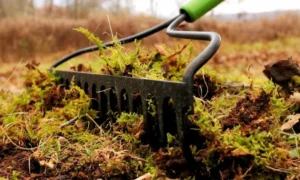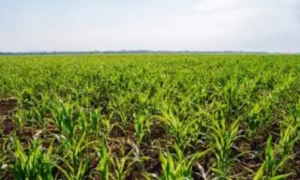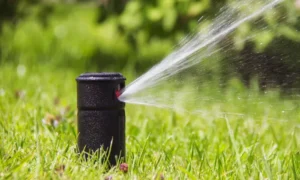
Low Maintenance Front Yard Landscaping Tips and Ideas
Low Maintenance front yard landscaping plays a crucial role in enhancing the overall aesthetic appeal of a property while also serving functional purposes. It’s often
Creating a beautiful backyard retreat doesn’t have to break the bank, and Robert Complete Care is here to help you achieve a stunning outdoor space without the need for a lush grass lawn. In this article, we’ll investigate an assortment of reasonable and eco-accommodating options that won’t just upgrade the style of your patio but also line up with your thrifty outlook.

One of the easiest ways to eliminate the need for grass is to replace it with gravel or pavers. Gravel provides excellent drainage and is cost-effective, while pavers offer a clean and organized look. Robert Complete Care can assist you in designing a pattern that complements your outdoor space, making it both functional and visually appealing.
Mulch is a budget-friendly option that adds a neat and natural look to your backyard. Pair it with ground cover plants such as creeping thyme or moss for a low-maintenance and eco-friendly solution. Robert Complete Care can recommend the right combination of mulch and ground cover plants to suit your aesthetic preferences.
If you desire the look of a green lawn without the maintenance, artificial turf is an excellent option. In addition to the fact that it is reasonable, it stays lavish and dynamic over time. Robert Complete Care can help you choose the right type of artificial turf that blends seamlessly with your backyard design.
Opt for container gardening to add a touch of nature to your backyard without the need for a large grassy area. Grow flowers, herbs, or even small vegetables in containers or raised beds. Robert Complete Care can provide creative solutions for arranging containers to maximize space and aesthetics.
Define different areas of your backyard with DIY pathways made from materials like recycled pallets, gravel, or stepping stones. Create borders using inexpensive materials like reclaimed wood or rocks. Robert Complete Care can assist you in designing pathways and borders that add structure and visual interest to your outdoor space.
Furnish your backyard with upcycled furniture to add charm and character. Robert Complete Care can help you source affordable or recycled materials to create unique seating and decor items. From pallet sofas to repurposed tire ottomans, the possibilities are endless.
Illuminate your backyard with budget-friendly outdoor lighting. Sun-based controlled lights are energy-effective as well as eliminating the requirement for costly electrical work. Robert Complete Care can help you strategically place lights to create a warm and inviting atmosphere in your outdoor space.
Enhance the tranquility of your backyard with a budget-friendly water feature. Consider a DIY pond using a prefabricated liner or repurposed containers. Robert Complete Care can guide you in selecting the right location and materials for a water feature that suits your budget.
Maximize your greenery by incorporating vertical gardens. Utilize old pallets, trellises, or hanging planters to create a vertical oasis. Robert Complete Care can recommend low-maintenance plants that thrive in vertical spaces, adding beauty without the need for extensive ground cover.
Engage with your local community to source affordable or free outdoor decor items. Swap plants, share gardening tools, or participate in community plant sales. Robert Complete Care can help you connect with local resources, fostering a sense of community while keeping your backyard project cost-effective.
With a little creativity and the expertise of Robert Complete Care, achieving a beautiful backyard without grass is entirely possible on a budget. From gravel pathways to container gardens and upcycled furniture, there are countless ways to transform your outdoor space into a haven of relaxation and beauty. Embrace these affordable ideas and let Robert Complete Care guide you on your journey to a stunning, budget-friendly backyard retreat. Feel free to contact us with any questions or concerns.
Q1: What Are Some Cost-Effective Alternatives To Grass For My Backyard Offered By Robert Complete Care?
A1: Robert Complete Care offers a variety of affordable backyard ideas without grass. Some options include installing gravel or mulch pathways, creating a patio or deck, or opting for low-maintenance ground cover plants like clover or moss.
Q2: How Can I Make My Backyard More Budget-Friendly While Still Maintaining Its Aesthetic Appeal?
A2: Robert Complete Care recommends incorporating recycled materials for DIY projects, such as repurposed pallet furniture or reclaimed bricks for a patio. You can also consider xeriscaping, which involves using drought-tolerant plants and reducing water usage, saving money in the long run.
Q3: Are There Any Eco-Friendly Options For A Grass-Free Backyard That Robert Complete Care Suggests?
A3: Absolutely! Robert Complete Care encourages eco-conscious alternatives like rain gardens, which help manage water runoff naturally. Additionally, you can create a wildlife-friendly habitat with native plants to support local ecosystems.
Q4: Can I Still Have A Functional Backyard Without Grass For My Kids Or Pets To Play In?
A4: Certainly! Robert Complete Care can design a backyard with various features like a play area with rubber mulch or a pet-friendly zone with artificial turf. These options provide safe spaces for both children and pets to enjoy.
Q5: What Are Some Low-Maintenance Landscaping Ideas For My Grassless Backyard From Robert Complete Care?
A5: Robert Complete Care suggests using low-maintenance ground covers like ground ivy or creeping thyme, as well as incorporating hardscaping elements such as stone pathways or decorative rock gardens. These features require minimal upkeep.
Q6: How Can I Create An Inviting Outdoor Space Without Breaking The Bank With Robert Complete Care’s Assistance?
A6: Robert Complete Care can help you design an inviting outdoor space on a budget by using cost-effective materials for seating, like cinder block benches, and adding budget-friendly lighting, such as solar-powered garden lights or string lights.
Q7: Is It Possible To Have A Small Backyard Without Grass That Still Feels Spacious And Open?
A7: Absolutely! Robert Complete Care can implement space-saving design elements like vertical gardens, mirrored surfaces, or well-placed furniture to make your small backyard appear larger and more open.
Q8: Are There Any Specific Plants Or Landscaping Features That Can Help Reduce Maintenance Costs For My Grassless Backyard?
A8: Yes, Robert Complete Care recommends using native plants that are adapted to your local climate and require less water and maintenance. Additionally, installing an automated irrigation system can help conserve water and reduce ongoing maintenance expenses.
Q9: Can Robert Complete Care Assist With Incorporating Budget-Friendly Outdoor Entertainment Options In My Grass-Free Backyard?
A9: Certainly! Robert Complete Care can help you create an entertainment space with options like DIY fire pits, outdoor movie screens, or budget-friendly seating arrangements, ensuring you have an enjoyable space without breaking the bank.
Q10: How Can I Get Started With Robert Complete Care To Transform My Grassless Backyard Into A Beautiful And Affordable Outdoor Oasis?
A10: To get started, simply contact Robert Complete Care through our website or by phone to schedule a consultation. Our experienced team will work with you to understand your needs and budget, and then provide customized solutions to transform your backyard into a stunning and cost-effective outdoor oasis.

Low Maintenance front yard landscaping plays a crucial role in enhancing the overall aesthetic appeal of a property while also serving functional purposes. It’s often

How to get rid of moss in your lawn can be a persistent problem, often appearing as a dense, green carpet that outcompetes grass for

Lawn fungus represents a significant challenge for homeowners and landscape professionals, impacting the aesthetic and health of lawns. These fungal infections can manifest as unsightly

Best time to water lawn and maintaining a lush, green lawn often involves more than just regular mowing. One crucial aspect of lawn care is

Ensuring optimal grass growth is crucial for maintaining a lush and healthy lawn. One of the key factors in achieving this is using the right

In the bustling metropolis of the sprinkler repair los angeles, where the sun shines almost year-round and the risk of fires is a constant concern,

Robert’s Complete Care has a proven track record of providing creative, high-quality lawn care Whittier services, CA area.
Copyright © 2023. All rights reserved Robert's Complete Care | Powered by Localpro1.